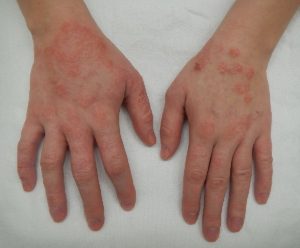Effective Treatment of Dermatitis: A Comprehensive Guide

Dermatitis is a common skin condition that affects individuals of all ages, leading to symptoms such as itching, redness, and inflammation. Finding the right treatment of dermatitis is crucial for managing these uncomfortable symptoms and improving your quality of life. This comprehensive guide will explore various effective strategies for the treatment of dermatitis, helping you to find relief and maintain healthy skin. The key to successful treatment of dermatitis lies in understanding the specific type you have, as well as identifying triggers that may exacerbate your condition.
Dermatitis, often referred to as eczema, encompasses several types, each with its own set of triggers and recommended treatments. Atopic dermatitis, contact dermatitis, and seborrheic dermatitis are among the most common forms. Despite their differences, the goals of treatment are to reduce symptoms, prevent skin irritation, and avoid infections.
Identifying Your Dermatitis Type
Atopic Dermatitis (Eczema): This is the most prevalent form, characterized by dry, itchy skin that can become inflamed and infected if scratched. It’s often seen in families with a history of allergies or asthma.
Contact Dermatitis: Caused by direct contact with irritants or allergens, this type results in red, itchy, and sometimes blistering skin in the area of contact.
Seborrheic Dermatitis: This form affects oily areas of the body, such as the scalp, face, and chest, leading to scaly, itchy, and red skin.
General Treatment Strategies
Moisturizing
Keeping the skin hydrated is fundamental in the treatment of dermatitis. Moisturizers should be applied daily, especially after bathing, to lock in moisture. For best results, use fragrance-free and hypoallergenic products to minimize irritation.
Topical Treatments
Corticosteroid creams and ointments are commonly prescribed to reduce inflammation and itching. It’s essential to use these products as directed by a healthcare provider to avoid potential side effects. For milder cases, over-the-counter options may be sufficient.
Medications
In more severe cases, oral medications or injectables, such as corticosteroids, may be necessary to control symptoms. Antihistamines can also help reduce itching, especially at night. Newer biologic drugs targeting specific parts of the immune system show promise for severe eczema treatment but are generally used as a last resort.
Light Therapy
Phototherapy, which involves exposing the skin to controlled amounts of natural sunlight or artificial UV light, can help reduce itching and inflammation. This treatment is often used when topical treatments are not effective alone.
Lifestyle and Home Remedies
Identifying and avoiding triggers is a critical component of managing dermatitis. Triggers can include soaps, detergents, wool, certain foods, stress, and climate changes. Using gentle skin care products, taking short, lukewarm baths, and wearing soft, breathable clothing can also help.
The Role of Diet and Nutrition
Though research is ongoing, some evidence suggests that diet and nutrition may play a role in managing dermatitis, especially atopic dermatitis. Foods rich in omega-3 fatty acids, such as fish and flaxseed, may help reduce inflammation. Probiotics and a diet high in fruits and vegetables might also support skin health. However, it’s important to consult with a healthcare provider before making significant dietary changes.
When to See a Doctor
If you suspect you have dermatitis, or if over-the-counter treatments aren’t providing relief, it’s important to consult with a dermatologist. A healthcare provider can help diagnose your condition, recommend appropriate treatments, and provide guidance on managing triggers.
Conclusion
The treatment of dermatitis requires a multifaceted approach that includes proper skin care, medication, lifestyle changes, and, in some cases, dietary adjustments. By understanding your type of dermatitis and working closely with a healthcare provider, you can develop a treatment plan that reduces symptoms and improves your skin’s health. Remember, while dermatitis can be challenging to manage, with the right strategies, you can achieve significant relief and enjoy a better quality of life.
In conclusion, the treatment of dermatitis is a personalized journey that involves understanding your skin, identifying triggers, and applying the right combination of treatments. With patience and perseverance, it’s possible to control symptoms and maintain healthy, comfortable skin.